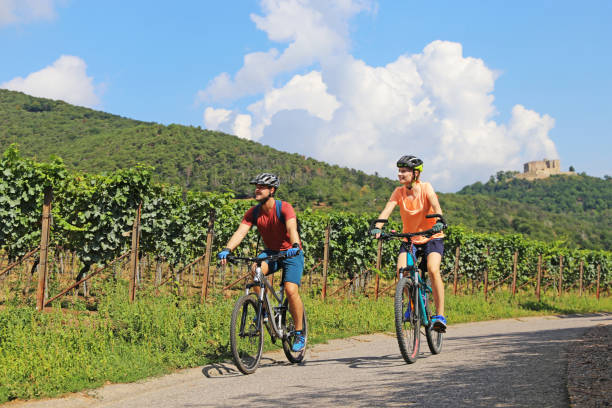Discovering the Enchantment of Bicycle Tourism
Bicycle tourism, once an obscure niche, is now gaining significant traction around the world. This unique mode of travel allows enthusiasts to explore fascinating destinations at a leisurely pace, directly interacting with nature, culture, and local communities. Let's delve into the intriguing evolution, current trends, and practical implications of bicycle tourism.

Unveiling the Historical Context of Bicycle Tourism
Bicycle tourism’s roots can be traced back to the late 19th Century when cycling became a popular pastime in Europe and North America. With the advent of the safety bicycle in the 1880s, which featured two equal-sized wheels and a chain drive, cycling’s appeal broadened. The bicycle was no longer merely a novelty but a practical mode of transportation, enabling adventurous souls to traverse their surroundings in novel ways.
Current Momentum and Trends in Bicycle Tourism
Fast-forward to the present, bicycle tourism is experiencing a newfound popularity. The rise of sustainable and health-conscious lifestyles has played a significant role in its recent surge. Today, it is not only seen as an adventurous way to explore but also as a means to reduce carbon footprint, promote physical fitness, and foster a deeper connection with local communities and environments.
Advantages and Challenges of Bicycle Tourism
Bicycle tourism offers numerous advantages. It promotes sustainable travel, encourages physical fitness, and allows travelers to experience destinations up close and personal, fostering a deeper connection with the local culture and natural environment.
However, it also presents certain challenges. Planning a cycling route requires careful consideration of factors such as terrain, weather conditions, and physical fitness levels. Additionally, long-distance cycling can be physically demanding, and in remote areas, access to amenities and emergency services might be limited.
Impact of Bicycle Tourism on Travelers
Despite the challenges, the impact of bicycle tourism on travelers is overwhelmingly positive. Cyclists often speak of the joy of discovering hidden gems that are typically missed on traditional tours. The sense of accomplishment after completing a long ride is unparalleled. Plus, the slower pace of travel allows for a more immersive and authentic cultural exchange.
Unfolding the Practicalities of Bicycle Tourism
Bicycle tourism requires careful planning. Here are some aspects to consider:
- Choosing the right bicycle: Different terrains require different types of bikes. Research on the terrain of your chosen destination and choose your bike accordingly.
- Training: Start training several months before your trip, building up your stamina and endurance.
- Route planning: Consider factors such as distance, terrain, and weather. Plan your route in a way that you get to explore the best of the destination.
- Packing: Pack light but don’t forget essentials like a basic repair kit, first-aid kit, water, and high-energy snacks.
In conclusion, bicycle tourism is an exciting, sustainable, and rewarding way to travel. It offers a unique perspective on destinations, enriching the travel experience in countless ways. So, if you’re looking for a new way to quench your wanderlust, why not give bicycle tourism a try? The road less traveled might just be a bike path waiting for your wheels to tread upon.





